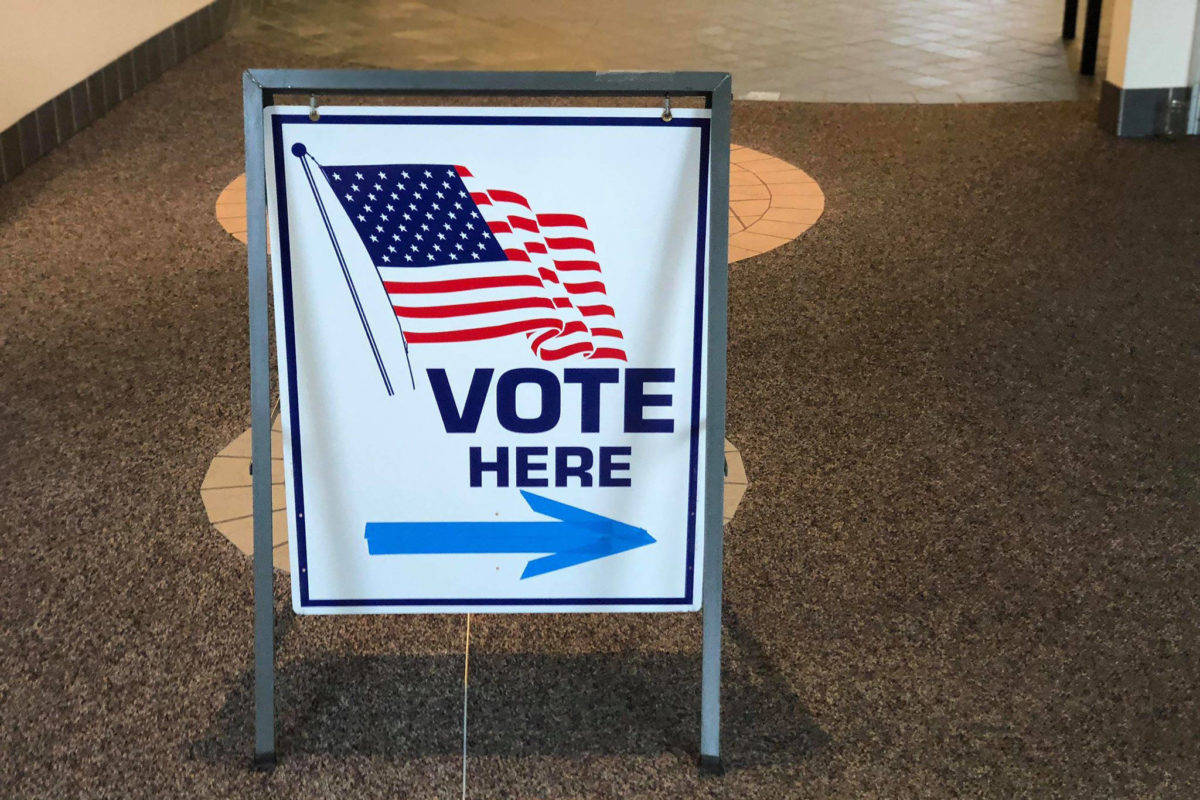A borough group seeking to increase voter participation and accessibility recently approved their final report and recommendations.
The Election Stakeholders Group was established Jan. 8, and tasked with researching ways to increase voter participation by developing sustainable election processes that maximize accessibility and inclusivity while conserving public resources, according to the report.
“The ESG spent many hours discussing voter engagement, cost, collaboration and efficiencies,” the report said.
The report addresses several aspects of the voting process, including upgrading to equipment that complies with the Americans with Disabilities Act, vote-by-mail and ranked-choice voting, guidelines for the voter pamphlet, public outreach methods and how Area Service Board positions are filled.
Voter accessibility
The Human Rights Commission declared current borough accommodations and equipment for voters with disabilities, especially those who are visually impaired, as “significantly discriminatory,” the report said.
The report said the hardware used by the borough is owned by the state, is at the end of its life, and does not comply with the Americans with Disabilities Act.
The stakeholders group recommended that the assembly transition the election process from the current polling site structure to a vote-by-mail hybrid structure. A subcommittee of the group traveled to Anchorage to see its Vote by Mail Election Central in action.
The methodology of the hybrid structure has been used by the borough for over 20 years in the communities of Cooper Landing, Hope, Fox River, Moose Pass, Seldovia/Kachemak Bay and Tyonek. The structure has proven to be more efficient and effective, the report said.
In this process, every registered voter would be mailed a ballot package two to three weeks prior to Election Day. Accessible vote centers will be established two weeks prior to Election Day in at least five locations throughout the borough. The equipment at the centers will be compliant with the Americans with Disabilities Act. Voters can choose to drop their voted ballots in a drop box, at a voter center or in the mail using prepaid postage.
Ballot drop boxes would need to be purchased for this recommendation, the report said, and may cost around $3,300 each.
Voter participation
Costs related to an initial voter outreach and education campaign for a vote-by-mail system would need to be considered as well. The group recommends the assembly appropriate funds for an extensive campaign. Voter turnout in the borough has been historically low, the report said, with higher or lower trends depending on what is on the ballot.
“One of the focuses of the outreach campaign would be specifically to encourage voter participation no matter what is on the ballot,” the report said.
The group recommends the use of social, print and broadcast media, as well as outreach with community groups.
Costs may be shared by cities within the borough.
“The (vote by mail structure) is a long term solution for the borough and the cities within the borough as it is not subject to the changing technology of the current structure,” the report said.
The report encourages the borough to work toward a technical solution ensuring voters can track their ballots.
The group believes the vote-by-mail system will increase voter turnout and decrease administrative costs over time.
The report also asks the assembly to adopt a resolution requesting the Legislature introduce and support a bill allowing for ranked-choice voting.
“The amendment would allow municipalities the flexibility to conduct runoff elections according to local preference,” the report said.
Including information in each ballot package to direct voters to a website with more voter information, candidate profiles and proposition summaries, was also recommended by the group.
“The information provided would also specify locations at which hard copies of the voter pamphlet could be obtained. In addition, hard copies of the voter pamphlet could be mailed directly to a voter upon request,” the report said.
Service Area Boards
When it comes to Service Area boards, the group recommends amending borough code to allow for those seats to be filled through appointment instead of by election.
“It is rare for a service area board race to be contested at an election,” the report said. “In addition, there have been many years when no candidate files for the seat at all and ultimately the seat is filled by appointment after the election is certified.”
Ballot advocacy
In its last recommendation, the group asks the assembly to amend borough code that provides for the inclusion of statements advocating voter approval or rejection on propositions. The report said this change could help streamline the voter pamphlet and reduce waste, while also decreasing voter confusion.
“The information provided and disseminated by the borough should be that of a factual nature,” the report said. “Public funds should not be used to further the message of an outside group, and the official voter information pamphlet is an inappropriate place to allow members of the public to advocate for or against a proposition.”
Historically, identifying possible authors of statements has proven problematic and statements submitted to be in the voter pamphlet are not vetted or verified by the borough, and may include misleading information, the report said.
The group was made up of assembly members, city council members, city managers, the borough mayor’s office and community members interested in contributing to the process, including Donna Aderhold, Brenda Ahlberg, Teri Birchfield, Cassidi Cameron, John Coleberg, Tyson Cox, Sammy Crawford, Linda Cusack, Willy Dunne, Joyanna Geisler, Brent Hibbert, Sue McClure, Scott Meszaros, Paul Ostrander, Robert Peterkin and Stephanie Queen. The first meeting was held Jan. 15, with subsequent meetings every two weeks, for a total of 12 public meetings.
The public was encouraged to attend the meetings, but besides two emails, there was no public participation in the meetings, the report said.
“A small subcommittee of the group did participate in a local radio show and had an opportunity to respond to questions for the listening audience,” the report said.

